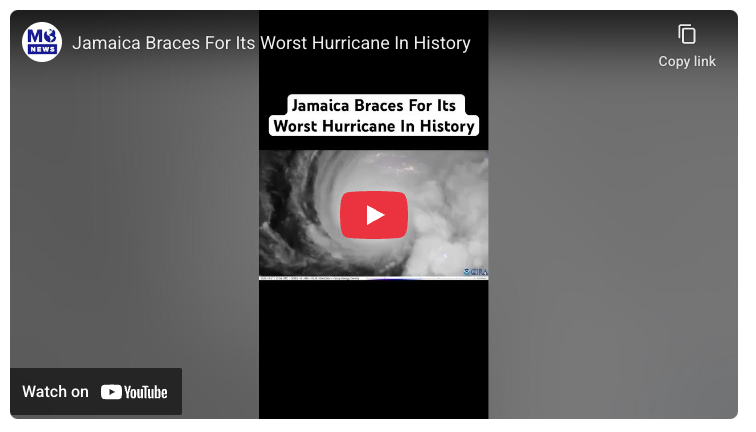Historic Category 5 Hurricane Set To Make Landfall In Jamaica
Category 5 Hurricane Melissa is bearing down on Jamaica in the coming hours and is expected to become the strongest hurricane ever to hit the island of about 3 million people since record-keeping began in 1851.
As of Monday afternoon, Melissa was southwest of Kingston with winds up to 175 mph and a well-defined eye flashing with lightning, according to satellite imagery from the Cooperative Institute for Research in the Atmosphere.
By the numbers: The storm is expected to bring the island as much as 40 inches of rain, destructive winds, and 9-13 feet of storm surge.
Category 5 hurricanes have sustained winds of 157 mph or higher and represent the maximum level on the Saffir-Simpson Hurricane Wind Scale.
The National Hurricane Center (NHC) said a “destructive storm surge” is expected to make landfall on Jamaica early Tuesday. It will then move toward Cuba later Tuesday before heading toward the Bahamas. The U.S.’s mainland is not expected to be affected, but about 1,000 nonessential military personnel and their relatives at the U.S. Navy base at Guantánamo Bay in southeast Cuba were evacuated over the weekend.
Melissa is the third Category 5 hurricane of the Atlantic season, the second-most of any season on record.
COMPARABLE STORMS
The storm’s slow movement — or stalling — is expected to worsen flooding and batter/weaken structures. Officials warn of widespread flash flooding, landslides, and power outages through midweek.
Similar types of storms — like Hurricane Harvey (2017) in Texas and Hurricane Dorian (2019) in the Bahamas — produced catastrophic flooding. Meteorologists say Melissa could even bring Hurricanes Katrina- or Michael-level devastation to the island
The strongest hurricane ever to hit Jamaica was 1988’s Hurricane Gilbert, a Category 4 storm with 130 mph winds.
Haiti, Jamaica, and the Dominican Republic’s steep terrain, paired with their tropical humidity, will squeeze more moisture from the storm — “like squeezing a wet sponge,” CNN reports, amplifying rainfall and triggering mudslides.


